The world is a big, wonderful place full of facts we never thought possible. For instance, if a pregnant mouse has a sudden medical issue, the fetus will send stem cells to heal the mother, increasing its chances of survival as well. Fetal stem cells have been found in human mothers as well, dubbed by science as microchimerism.
Bright Side dug up some more marvelous facts about nature and its creations, upholding our yearly resolutions to spread knowledge and joy.
1. The heart slows when your face touches water.
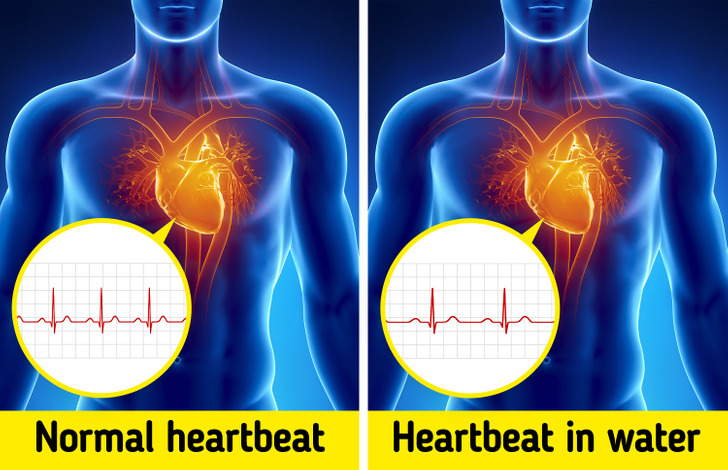
As mammals, we can’t breathe underwater, so as part of the mammalian dive reflex, our heart rate goes down in the water — more so if we go underwater. Even splashing the face with water makes the heart slow down, making it a great way to calm down.
2. Fungus can break down plastic in weeks.
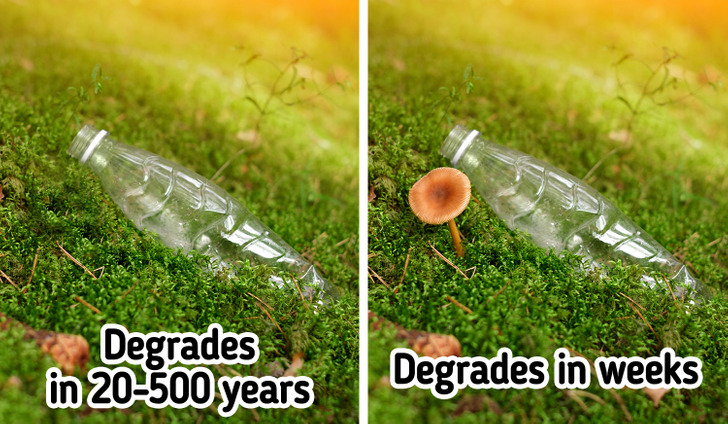
It is said that in the future, there may be more plastic in the ocean than fish. This is why the plastic-eating fungus is great news, and there are around 50 new species of such fungi discovered already. One of the fungi discovered can digest plastic within 2 months, so there’s hope for us yet.
3. Newborn babies can support their own weight.

Newborn babies are strong — strong enough to be able to grasp things in their tiny fists and even support their weight as shown by an experiment done in the nineteenth century. Louis Robinson witnessed babies able to hang from a walking stick, from 10 seconds to 2 minutes and 35 seconds.
4. Koala fingerprints have been mistaken for human ones.
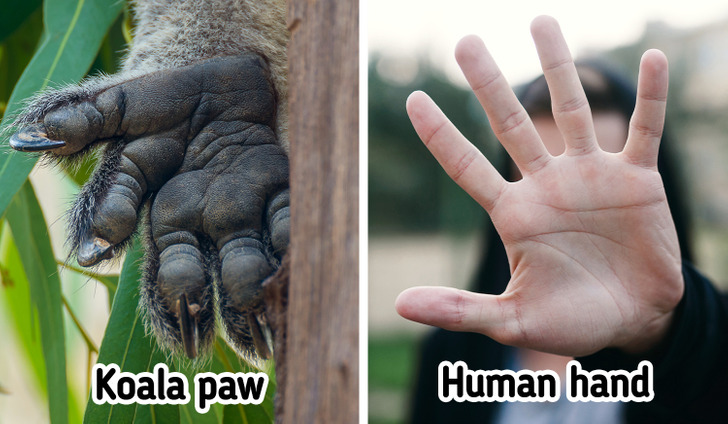
We’ve been told that our fingerprints are unique, and they are. But the fact remains that even though we share a common ancestor with the koala that was alive 100 million years ago, koala fingerprints look very similar to human fingerprints, as do chimpanzee fingerprints for that matter.
5. Snails can sleep for 3 years.
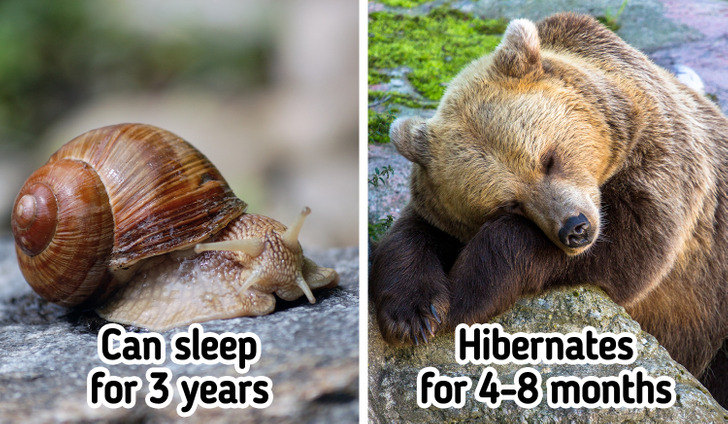
If you thought bears had it good with hibernation, meet the snail. Snails can sleep rather than hibernate for 3 years at a time without needing food. Of course, this is with some snail species, not all of them. Meanwhile, bears usually hibernate for just 4-8 months.
6. Sloths need 2 weeks to digest food.

Sloths don’t only move in slow motion — even their insides move slowly, ostensibly to preserve energy, which is why a sloth’s digestive system takes 2 weeks to process the food it ate. Plus, most of what it eats is indigestible, giving it very little energy from each slowly chewed mouthful.
On the other end of the spectrum lies the shrew, whose digestion takes mere minutes and is done so fast, not much of it is fully digested. This is the reason why shrews eat their own feces. They can die of starvation in a matter of hours if they don’t eat.
7. Your brain ignores seeing your nose.
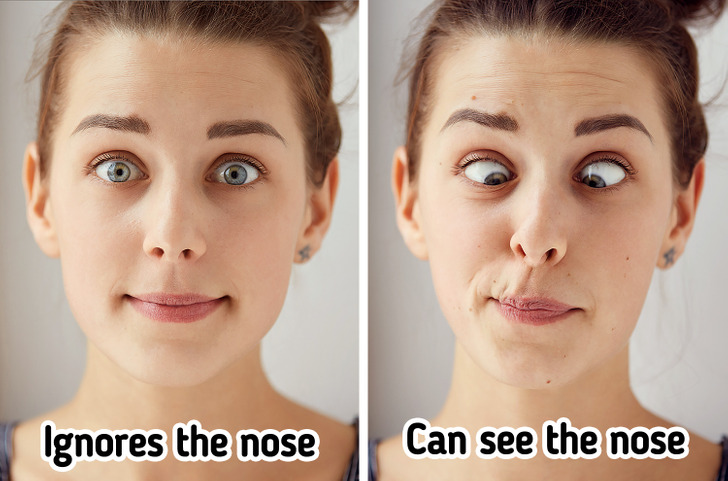
We can see our nose all the time, it’s just that the brain tends to ignore it because it’s a constant visual stimulus. It’s the same with people who wear glasses. After a while, they simply stop noticing them.
8. Your forearm is the same length as your foot.

If you don’t have the time to try on a shoe, measure it from your elbow crease to your wrist. If it fits or is just a little smaller, it would fit your foot because the length of your forearm is the same as your foot. And this is just one of many human body ratios that are a marvel in themselves, including the fact that your femur bone is one-quarter your height.
9. You can “see” your white blood cells.
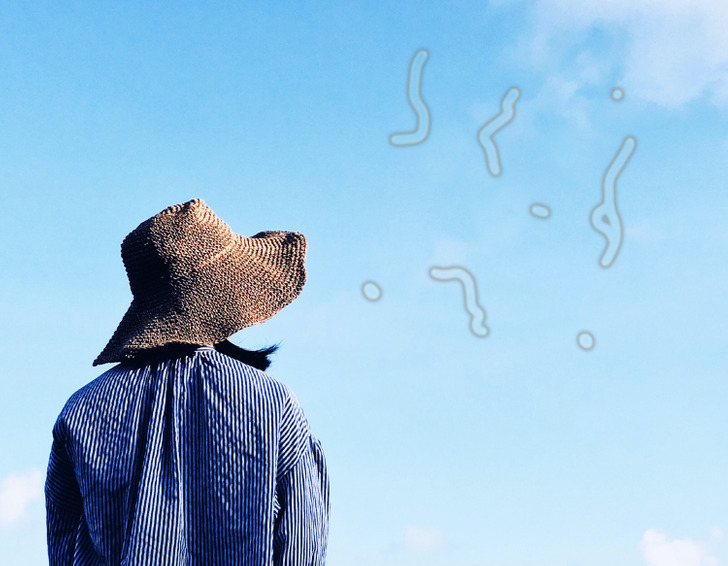
If you look up at a cloudless, bright blue sky and see some wiggly things at the periphery of your vision, you’ve just experienced the blue field entoptic phenomenon. The wiggly things are white blood cells moving in the fine blood vessels moving in front of the retina, at the back of the eye.
10. Human beings have striped skin, but only cats can see it.
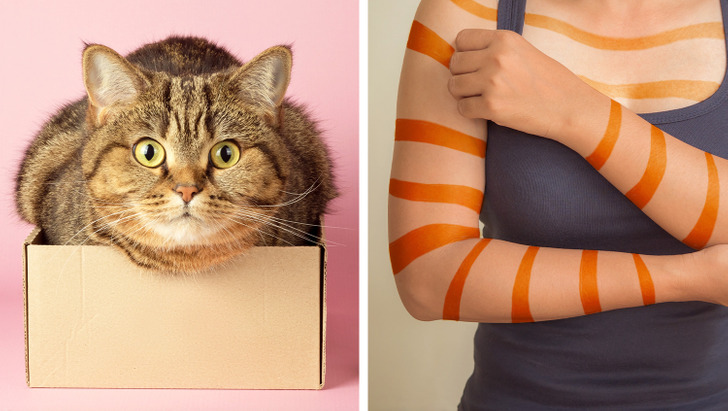
Human beings have stripes and patterns on the skin too, and they are called Lines of Blaschko, name eponymously by the scientist who discovered them, Dr. Alfred Blaschko. These are closer to tiger stripes, forming more of a V-pattern fanning out from the center to the extremities. These lines are visible under UV light, a spectrum that cats can see too, which is why cats can see you as a striped being as well.
Which of these facts turned out to be a revelation for you? Share your extreme nature facts with us and blow us away.
Preview photo credit Shutterstock.com, Shutterstock.com
Woman’s One Day Away Becomes a Mother’s Worst Fear After a Call from School — Story of the Day

Mary juggled everything at home while her husband, George, stayed hands-off. Fed up, she decided to take a day for herself, leaving their daughter in his care. But as she relaxed by the ocean, her phone lit up with missed calls from the school. Now, fear set in—what happened while she was away?
Mary stood in the kitchen, moving frantically as she tried to make breakfast. She glanced at the clock and groaned. She had overslept again. Meanwhile, George was still snoring loudly upstairs.

For illustration purposes only. | Source: Midjourney
She flipped the toast out of the toaster, only to see that it was burnt. “Ugh!” she muttered, tossing it aside. Without slowing down, she cracked eggs into the pan, but in her hurry, they burned just like the toast.
Suddenly, her alarm blared again, making her jump. “Oh, come on!” she cried, and in the confusion, she knocked over her cup of coffee.
The hot liquid splashed onto her arm, stinging her skin. “Damn it!” she yelped, grabbing a towel to wipe off the mess.
With no time to waste, she rushed to Missy’s room. She sat on the edge of the bed, gently shaking her daughter awake. “Missy, honey, it’s time to get up,” she said softly. Missy groaned, rolling over and pulling the blanket over her head.

For illustration purposes only. | Source: Midjourney
Mary lifted the still half-asleep Missy and carried her to the bathroom. As she helped Missy wash her face and brush her teeth, she glanced at herself in the mirror. Her hair was wild, her pajamas were wrinkled, and a big coffee stain covered her shirt.
She carried Missy down the hall, heading toward the bedroom. She pushed the door open with her foot and saw George sprawled out on the bed, snoring softly.
“George, I’m running late. Missy’s going to be late for school. Can you help me, please?” Her voice was almost pleading.

For illustration purposes only. | Source: Midjourney
George grunted and rolled to his side, burying his face in the pillow. “Five more minutes,” he mumbled.
Mary sighed and hurried back downstairs, Missy clinging to her. She set Missy down at the table, grabbed a box of cereal, and poured it into a bowl, adding milk.
“I don’t want this!” Missy whined, pushing the bowl away.
Mary took a deep breath, trying to stay calm. “What do you want, sweetheart?”

For illustration purposes only. | Source: Midjourney
“Pancakes!”
Mary glanced at the time. She was almost out of it. “George!” she shouted toward the stairs. “I really need your help! Get Missy dressed!”
Silence. Not a single sound came from George.
Gritting her teeth, Mary grabbed the pancake mix and began braiding Missy’s hair as the batter sizzled in the pan.

For illustration purposes only. | Source: Midjourney
George finally strolled into the kitchen, rubbing his eyes. His gaze landed on the stove. “Oh! Pancakes!” he said with a smile, sitting at the table. Without a care in the world, he grabbed a fork and began eating.
Mary glanced at him, her hands busy packing Missy’s lunch. Her shoulders ached from rushing around all morning, but she kept quiet.
“Did you forget to grab my morning paper?” George asked between bites.
Something inside Mary snapped. The words hit her like a slap. “Your paper?!” she yelled. “Why don’t you get it yourself? I’ve been running around like a maniac this morning getting Missy ready for school! I asked you to help! You didn’t even try!”

For illustration purposes only. | Source: Midjourney
George blinked, looking confused. “But I work, and you’re a stay-at-home mom…”
Mary cut him off. “You’re on vacation!” she screamed. “You know what? I’ve had enough! I’m taking the day off. You’re dropping Missy off and picking her up from school. You’re watching her all day. I need a break!”
George scratched his head, frowning. “I thought she still went to kindergarten.”
“Aaagh!” Mary shouted, storming out of the kitchen. She raced upstairs to the bathroom, slamming the door and locking it behind her.

For illustration purposes only. | Source: Midjourney
Mary stood in the bathroom, listening to the faint sound of George and Missy leaving. The front door clicked shut, and for a moment, there was silence.
She let out a long breath. Slowly, she turned on the shower, letting the hot water wash over her. It felt good, soothing her frayed nerves.
Afterward, she got dressed in comfortable clothes, grabbed a small bag, and packed a few essentials—her wallet, a book, and some snacks.

For illustration purposes only. | Source: Midjourney
She walked out of the house, locking the door behind her. Climbing into the car, she started the engine and drove toward the ocean, craving a peaceful escape.
Mary stretched out on the warm sand, feeling the sun on her skin. The sound of the waves calmed her, washing away the morning’s stress. She swam in the cool water, floated on her back, and felt a rare sense of peace. For once, she left her phone buried in her bag.
After a while, she sat up and reached for her phone, thinking it was time to check in. As she turned on the screen, her heart skipped a beat. There were over ten missed calls from the school. Something was wrong.

For illustration purposes only. | Source: Midjourney
Mary’s hands shook as she dialed the school’s number. When someone finally answered, she could barely keep her voice steady.
“Hello? You called? Is something wrong?” Mary asked, her voice trembling.
“Yes, Mrs. Johnson,” replied an elderly woman on the other end. “Missy has gone missing. She went outside during recess and didn’t come back.”
Mary’s stomach dropped. “What do you mean? How could she not return?” she almost shouted, her fear rising.

For illustration purposes only. | Source: Midjourney
“We tried reaching you and your husband, but we couldn’t get through.”
Mary felt like the world was spinning. “How could you let this happen?!” she screamed.
“Please, Mrs. Johnson, calm down,” the woman said gently. “We’re doing everything we can to find her.”
“How can you say that?!” Mary yelled. “You don’t know what’s happened to her!” Her voice cracked as she spoke. Without waiting for a reply, she hung up, her hands shaking uncontrollably.

For illustration purposes only. | Source: Midjourney
She dialed George’s number, throwing clothes into her bag. When he answered, she didn’t waste a second.
“Where are you?!” she screamed into the phone, her voice filled with panic.
“I’m with the police,” George replied. “I’m giving them information about Missy.”
Mary froze for a moment, trying to calm her racing heart. For once, George was stepping up, actually doing something for their daughter.
“But I was told the school couldn’t reach you,” Mary said.
“Yeah… I was at the bar with a colleague, but I saw the missed calls and called them back right away,” George replied, sounding guilty.

For illustration purposes only. | Source: Midjourney
“All right,” she managed to say, her voice steadier now. “I’m on my way.” She hung up, grabbed her keys, and rushed to the car.
She jumped into the car, her hands trembling as she fumbled with the keys. The engine roared to life, and she sped out of the parking lot. Her heart pounded in her chest as she weaved through traffic, ignoring the honks and angry shouts from other drivers.
She gripped the wheel so hard her knuckles turned white. Tears blurred her vision, but she blinked them away, focusing on the road ahead.

For illustration purposes only. | Source: Midjourney
Finally, she skidded to a stop in front of the school. Barely shutting the car door, she rushed inside. The teachers and staff crowded around her, their faces filled with worry.
“Missy didn’t come back to class after recess,” one of them explained. “We’ve been searching everywhere.”
Mary didn’t wait to hear more. She darted down the hallways, calling out Missy’s name. She checked every bathroom, looked under tables in classrooms, peeked behind doors, her desperation growing with each step.
“Missy! Where are you?” she cried. She started to feel dizzy, her breaths coming in short gasps. Her mind screamed, This is my fault! I should have never left her with George!

For illustration purposes only. | Source: Midjourney
Mary sat on the school steps, burying her face in her hands. Tears streamed down her cheeks, and her body shook with quiet sobs. She felt helpless. Missy was still missing, and she didn’t know what to do.
Suddenly, her phone rang. She jumped, quickly wiping her eyes. It was George. Her hands trembled as she answered.
“What… what’s the police saying?” she stammered, her voice breaking.
“I found her,” George said, his voice steady.

For illustration purposes only. | Source: Midjourney
Mary froze. “You… you found her?” she whispered, hardly believing it.
“Yes, we’re at the park. Come here now,” George replied.
Mary leaped up and sprinted to the park, her heart pounding. When she spotted George and Missy sitting on a bench, relief flooded over her. She ran toward them, dropping to her knees as she wrapped her arms around Missy. Tears spilled down her face, soaking Missy’s hair.
“Sweetie, what happened?” Mary asked, holding Missy close.

For illustration purposes only. | Source: Midjourney
Missy looked up, her eyes wide. “Dad said we’d go for a walk later. I got tired at school, so I came to the park,” she said, her voice small.
Mary turned to George, shooting him a furious glance. He shifted his gaze to the ground, guilt written all over his face.
“Sweetheart, you can’t just leave school like that,” Mary said, her voice trembling. “We were so scared. We didn’t know where you were.”
Missy frowned. “I’m sorry. I won’t do it again,” she said. “I just wanted to walk with Dad.”

For illustration purposes only. | Source: Midjourney
Mary sighed, feeling the weight of her daughter’s words. She squeezed Missy’s hand. “All right, let’s go home,” she whispered.
On the drive home, the car was quiet. Missy had fallen asleep in the backseat, her head resting against the window. Mary gripped the steering wheel, her mind racing.
She wanted to scream at George, to shout about how careless he’d been, how he’d ignored their child for so long. But before she could open her mouth, George broke the silence.
“I’m sorry,” he said, his voice low.

For illustration purposes only. | Source: Midjourney
Mary glanced at him, her eyes hard. “Sorry isn’t enough,” she replied, her tone sharp. “Our daughter could have been hurt today. Do you get that?”
George nodded, looking down at his hands. “I know,” he admitted. “I haven’t been the best father.”
Mary shook her head, anger bubbling up again. “It took her going missing for you to realize that? Really?”
George took a deep breath and reached into his pocket. He pulled out a small piece of paper and handed it to her. Confused, Mary glanced down. It was a cruise ticket.

For illustration purposes only. | Source: Midjourney
“What’s this?” she asked, still angry but now curious.
“You deserve a break,” George said, his voice steady. “After you left this morning, I saw the burnt eggs, the cereal, the pancakes. You made three breakfasts in one morning. And that’s only a small part of what you do every day. I’m sorry I didn’t see it before or appreciate you.”
Mary looked at the ticket, then back at George. “And who’s going to look after Missy?” she questioned.
“I will,” he answered, meeting her eyes. “I’m her father. It’s time I started acting like one.”

For illustration purposes only. | Source: Midjourney
Mary pulled into the driveway and parked. She turned to George, her eyes softening. Slowly, she leaned over and hugged him, letting the tears flow.
“I’ll do better,” George promised, holding her tight. Mary nodded, feeling a weight lift off her shoulders. Finally, he understood.

For illustration purposes only. | Source: Midjourney



Leave a Reply